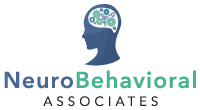Attention Deficit Hyperactivity Disorder, or ADHD, is characterized by hyperactive, inattentive, and impulsive traits that negatively impact the daily life of a child or adult. (2) ADHD is usually diagnosed in childhood, often after a school teacher notices the concerning behaviors. School is one of the few locations in a child’s life where structure and focus are expected. As a result, children with ADHD have a complicated relationship with the school system. While these students might need more one-on-one attention or guidance than students who are not neurodivergent, they also benefit from the unique teaching methods, routine, and specialized teachers that school can provide.
As the COVID-19 pandemic got underway and began forcing schools to use more virtual methods of learning, students with ADHD and other conditions experienced a profound shift in how they were expected to learn. Parents were suddenly put in the difficult position of assisting with school work while balancing their own careers. Most parents, understandably, are also not trained in providing school instruction to their neurodivergent children. The lack of a regular school day with teacher’s aides and predictable routines has made virtual learning a new challenge for many families. Luckily, there are ways that parents can make Zoom classrooms and virtual learning a more positive experience for their students.
Use the Pomodoro Method
The Pomodoro Technique is a time management method that might be especially helpful for students with ADHD.(3) To use this method, set a timer (the name of the method comes from the tomato kitchen timer) and have your child concentrate on one assignment or task for 25 minutes.
When the timer goes off, your child can then take a 5 minute break.(1) This is a great time to have your child move around. Children with ADHD benefit from movement. Stretch, do a quick session of Go Noodle, or pedal the bike outside for a bit. Then, after the break, your child focuses again for 25 minutes.
After around 4 cycles of this, your child can take a longer break of 20 to 30 minutes. Keep track of the method in a notebook or journal.(1) Many parents write down their children’s expected tasks for each work session on post-it notes to keep them from being distracted by new assignments or digital notifications.(3)
Create a School Environment at Home
While it might seem more comfortable to let your child work while sitting on the couch or draped across their bed, it’s important to try to recreate the school environment as much as possible. Finding space in your home for a small desk and school supplies, or even creating a workspace at your dining room table, can help students with ADHD get in the right frame of mind for school work.(3)
If a desk isn’t in the budget right now, check with your school about resources that might be available to your student. For instance, in Montgomery County, a group of local parents have been building free desks for students through their Desks by Dads initiative.
Stick to a Schedule
It can’t be said enough; students with ADHD benefit from a predictable structure and routine with clear daily expectations. As much as possible, coordinate your work schedule with friends and family to help your student stick to a daily schedule. Spend time each morning going over the day’s expectations, including any planned Zoom meetings.(3) Use visuals to help your child remember and have a clearer picture of the day in their head. In fact, many parents choose to make and use picture schedule cards for their children.
COVID-19 Resources from NeuroBehavioral Associates
The professionals at NeuroBehavioral Associates have put together a series of blog posts to help guide and inform families during this difficult time. NeuroBehavioral Associates remains open. We are providing low-contact assessments in our office, as well as telehealth services for children, teens, and adults. Call 410-772-7155 or email us to schedule an appointment today.
References:
- Collins, B. (2020, March 3). The Pomodoro Technique Explained. Forbes; Forbes. https://www.forbes.com/sites/bryancollinseurope/2020/03/03/the-pomodoro-technique/?sh=108247c33985
- Hurley, K. (2016). ADHD & Technology: A Help or a Hindrance. Psycom.net – Mental Health Treatment Resource Since 1986. https://www.psycom.net/adhd-and-technology
- Rogers, K. (2020, May 23). How to help children with ADHD thrive in a virtual schoolhouse. WTOP. https://wtop.com/parenting/2020/05/how-to-help-children-with-adhd-thrive-in-a-virtual-schoolhouse/






